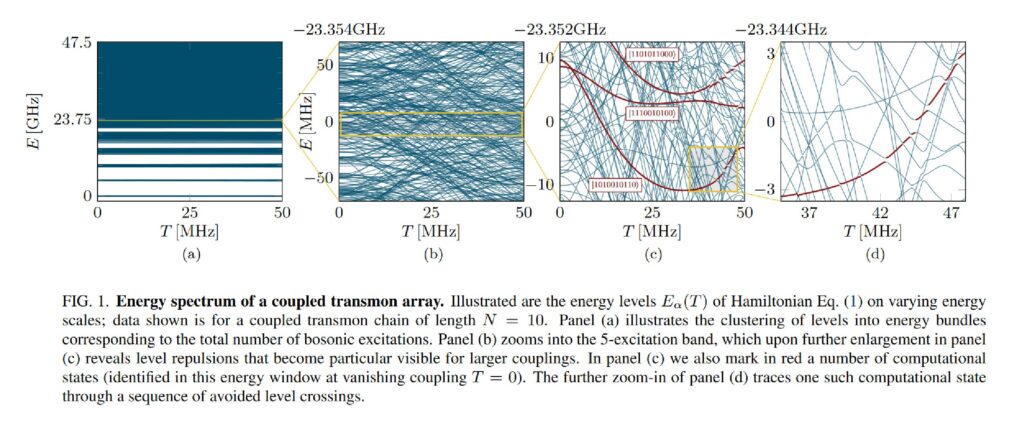
Three cluster members joined efforts to discuss chaotic fluctuations in superconducting transmons. In their recent paper (https://arxiv.org/abs/2012.05923), the authors from the groups of Simon Trebst, Alexander Altland and David DiVincenzo investigate the possibility to balance intentional disorder (to protect qubits) and nonlinear resonator couplings (to manipulate them) given the challenge of chaotic fluctuations. In the paper two different quantum processors, those using untunable qubits (IBM type) and those using tunable qubits (Delft/Google type). Applying three independent diagnostics of localization theory – a Kullback-Leibler analysis of spectral statistics, statistics of many-body wave functions (inverse participation ratios), and a Walsh transform of the many-body spectrum – the authors find that these computing platforms are dangerously close to a phase of uncontrollable chaotic fluctuations.
Browse the ML4Q News Archive